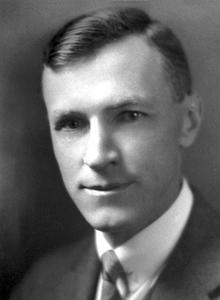William P. Murphy facts for kids
Quick facts for kids
William P. Murphy
|
|
|---|---|
 |
|
| Born | February 6, 1892 |
| Died | October 9, 1987 (aged 95) |
| Spouse(s) | Harriett Adams |
| Children | 2 (including William P. Murphy Jr.) |
| Awards | Cameron Prize for Therapeutics of the University of Edinburgh (1930) Nobel Prize in Physiology or Medicine (1934) |
William Parry Murphy (born February 6, 1892, in Stoughton, Wisconsin – died October 9, 1987) was an American doctor. He won the Nobel Prize in Physiology or Medicine in 1934. He shared this important award with two other scientists, George Richards Minot and George Hoyt Whipple. They won for their amazing work on a type of anemia called macrocytic anemia, especially pernicious anemia. Their research helped doctors understand and treat this serious disease.
Contents
Early Life and Education
William P. Murphy was born in Stoughton, Wisconsin. When he was young, his family moved to Condon, Oregon. He went to public schools in both Wisconsin and Oregon.
He earned his first degree, an A.B., in 1914 from the University of Oregon. Later, he studied medicine at Harvard Medical School. He became a doctor, earning his M.D. degree in 1922.
Important Medical Discoveries
In 1924, Dr. Murphy started important research. He made dogs anemic (meaning they had too few red blood cells). Then, he fed them different foods to see what would help them get better.
He found that eating a lot of liver seemed to help the anemic dogs recover faster than other foods. This was a big clue!
Curing Pernicious Anemia
Dr. Minot and Dr. Whipple then joined the research. They worked to find out what in the liver was helping. They discovered that iron in the liver helped with anemia caused by bleeding.
But they also tried liver on people with pernicious anemia. This was a very serious disease that often led to death before their discovery. They found that liver helped these patients too!
The special ingredient that helped with pernicious anemia was not iron. It was a new substance found in a water-soluble part of the liver. Later, scientists were able to find and name this substance: vitamin B12.
Even before they fully understood vitamin B12, knowing that raw liver and its extracts could treat pernicious anemia was a huge step forward in medicine. It turned a deadly disease into one that could be managed.
Awards and Recognition
In 1930, Dr. Murphy received the Cameron Prize for Therapeutics of the University of Edinburgh. He shared this award with Dr. George Minot.
His most famous award was the Nobel Prize in Physiology or Medicine in 1934. He shared it with his colleagues for their groundbreaking work on anemia.
Personal Life
William P. Murphy married Pearl Harriett Adams on September 10, 1919. They were married until her death in 1980. They had two children: a son named William P. Murphy Jr. and a daughter named Priscilla Adams.
Later Years
In 1951, Dr. Murphy was one of seven Nobel Prize winners who attended the first ever Lindau Nobel Laureate Meeting. These meetings bring together Nobel laureates and young scientists from around the world.
See also
 In Spanish: William Parry Murphy para niños
In Spanish: William Parry Murphy para niños

